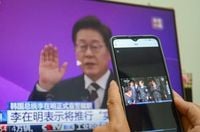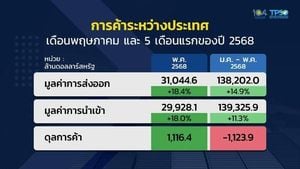South Korean President Lee Jae Myung marked his global debut at the Group of Seven (G7) Summit in Kananaskis, Canada, from June 16 to 17, 2025, just thirteen days after his election. Despite the short preparation time, Lee’s participation underscored South Korea’s rising role in international affairs and offered a vital opportunity to restore confidence in the country’s diplomacy on the world stage.
During the summit, Lee engaged in nine bilateral meetings with leaders from South Africa, Australia, Brazil, Mexico, India, the United Kingdom, the European Union, Japan, and Canada. South Korea’s continued involvement in the G7 since its first invitation in June 2021 highlights the nation’s growing stature amid a fragmented global governance landscape challenged by ongoing wars, conflicts, and economic disruptions.
One of the summit’s key outcomes was the reaffirmation of cooperation between South Korea and Japan. Lee held a critical bilateral meeting with Japanese Prime Minister Shigeru Ishiba, just five days before the sixtieth anniversary of the normalization of diplomatic relations between the two countries. This meeting was particularly significant given historical and territorial disputes that have long strained ties.
Both leaders acknowledged the importance of sustained bilateral cooperation and agreed to continue shuttle diplomacy between Seoul and Tokyo. President Lee emphasized a "future-oriented" relationship, signaling a clear intention to maintain policy continuity regardless of changes in government. This approach sets a promising trajectory for bilateral ties and could energize trilateral cooperation with the United States.
However, the summit was overshadowed by the escalating conflict between Israel and Iran, which led to U.S. President Donald Trump’s early departure. This unexpected development disrupted Lee’s planned summit meeting with Trump—a missed opportunity to discuss critical issues delayed by South Korea’s domestic political turmoil over the past six months.
Lee’s meeting with Trump is now expected to take place on the sidelines of the upcoming NATO Summit in late June 2025, provided both leaders attend. Yet, with thirty-two member states and numerous partner countries participating, the NATO summit may not offer the focused setting necessary for an in-depth dialogue. Trump’s known preference for bilateral engagements and the distractions of pressing global crises could further complicate meaningful discussions.
Such circumstances risk portraying South Korea as chasing Trump for attention rather than securing substantive dialogue—an optics problem that alliance managers in Washington and Seoul will want to avoid. To this end, a dedicated, standalone summit at the White House is recommended to ensure focused talks. Meanwhile, the NATO summit presents an opportunity for Lee to strengthen ties with European leaders, which would be valuable amid North Korea’s expanding partnership with Russia.
Speaking of North Korea, the regime has quietly reshaped its South Korea policy since Lee took office, leaving open the possibility of easing tensions and pursuing limited cooperation. Pyongyang views restoring the September 19, 2018, inter-Korean military pact as a key test for improved relations, despite having declared it terminated in November 2023.
A high-ranking source in North Korea told Daily NK that the country does not want war but will maintain its principle of meeting strength with strength—nuclear weapons with nuclear weapons, full-scale war with full-scale war if necessary. However, some officials interpret the restoration of military agreements and additional measures by Seoul’s new government as signs of sincerity.
North Korea reportedly wants concrete actions, not just words, to ease military tensions, believing that reducing these tensions would promote stability between the two Koreas. The regime aims to redirect resources from the inter-Korean frontier toward economic development and advanced weapons programs, viewing this as true self-defense and the path to becoming a strong nation.
Despite this, Pyongyang remains skeptical about restarting the Kaesong Industrial Complex or Mount Kumgang tourism, two former symbols of inter-Korean cooperation. Instead, it plans to develop these areas as "global tourism economy scenic spots," signaling a shift toward international projects. Nevertheless, North Korea is open to "indirect and limited economic cooperation," especially through company-to-company or group-to-group deals linking South Korea with China or Russia.
On civilian exchanges, North Korea is expected to take a more rigid stance, viewing cultural, sports, and arts contacts as potential political tools of external influence. The regime plans more thorough inspections to prevent perceived threats to its stability, consistent with restrictive laws passed since 2020 designed to block foreign culture and information.
If South Korea strengthens cooperation with the United States and Japan, North Korea plans to brand this as a "new military fascist alliance" and respond with provocations such as expanding military reconnaissance satellite launches and deploying tactical nuclear weapons. Additionally, if joint military exercises with the U.S. continue or defense spending increases, North Korea intends to prepare new military strategies across air, sea, undersea, and land domains.
Domestically, South Korea is grappling with political and economic challenges. The nation’s political landscape was shaken by former President Yoon Suk-yeol’s illegal declaration of martial law on December 3, 2024, which led to his impeachment by the National Assembly on December 14 and removal from office by the Constitutional Court on April 4, 2025. This turmoil culminated in Lee Jae-myung’s victory in the June 3 presidential election, with his administration inaugurated the following day.
Lee won with 49.4% of the vote, securing pluralities across various regions and age groups, notably among voters in their 40s and 50s. Unlike the usual two-month post-election transition, Lee took office immediately, prioritizing political stability and an end to the six months of turmoil that had left the presidency vacant.
One of the administration’s most pressing challenges is bridging the country’s sharp political and social divides. This will require institutional reforms that spotlight Yoon’s "insurrection," making the task of achieving unity and reform complex. Meanwhile, the conservative opposition remains fractured and lacking accountability, with some factions potentially resorting to extreme street politics.
Economically, Lee has made recovery his top agenda. On June 19, 2025, his administration proposed a $14.7 billion (30.5 trillion won) extra government spending plan to support sluggish domestic demand. This supplementary budget includes 20.2 trillion won of new spending and covers a 10.3 trillion won shortfall in tax revenue.
This is South Korea’s second extra budget of the year, following the first supplementary budget of 13.8 trillion won passed in May. The central bank had recently slashed its economic growth forecast for 2025 to 0.8% from 1.5%, citing uncertainties from U.S. tariffs and domestic political turmoil. The economy contracted unexpectedly in the first quarter of 2025 amid these pressures.
The flagship policy of Lee’s budget is a universal cash handout scheme, providing vouchers worth 150,000 to 500,000 won to every citizen, totaling 10.3 trillion won. Lee had introduced a similar cash handout scheme as mayor of Seongnam City, which was later adopted nationwide during the COVID-19 pandemic. Critics have questioned the policy’s effectiveness, but Lee remains committed.
Other budget allocations include financial support for the construction sector, investments in artificial intelligence, aid for small and medium-sized enterprises, and debt restructuring programs for small businesses. To finance the combined 30.5 trillion won, 19.8 trillion won will be raised through additional treasury bonds.
This second extra budget will raise South Korea’s fiscal deficit to 4.2% of GDP for 2025, up from the previous estimate of 3.3%, and government debt will increase to 49.0% of GDP from 48.4%. The government plans to submit the proposal to parliament, controlled by the ruling Democratic Party, on June 23, 2025.
On the diplomatic front, Lee’s administration appears poised to continue much of the previous government’s foreign policy while correcting its excesses. This includes adopting a more engaged posture toward North Korea, maintaining an appropriate distance from China and Russia, and emphasizing cooperation with Japan and the United States while distinguishing itself from prior unilateral concessions on historical issues.
Lee’s pragmatic diplomacy, centered on national interest and economic benefits rather than ideology, aims to balance continuity with necessary corrections. South Korea’s progressive administration does not intend to be anti-Japanese, recognizing the importance of common interests and the need to manage contentious issues jointly to prevent them from becoming politically charged.
As South Korea navigates domestic recovery, regional security challenges, and global diplomatic engagements, President Lee Jae Myung’s leadership will be pivotal in shaping the country’s trajectory amid a complex and shifting international landscape.




